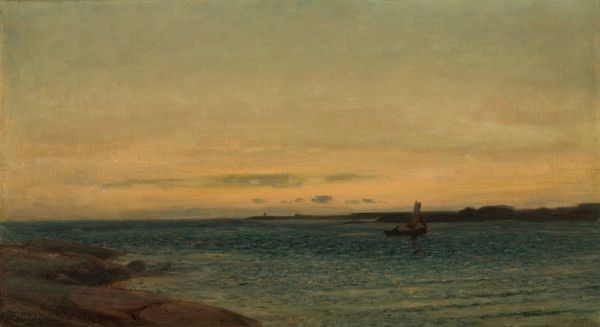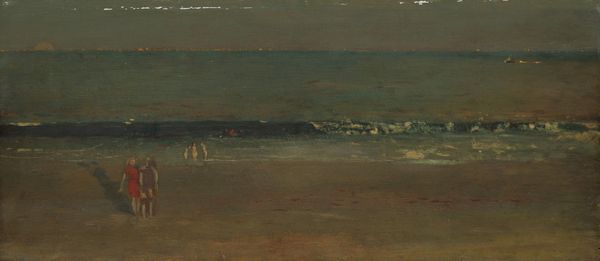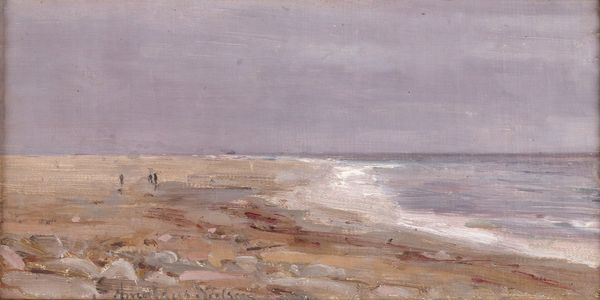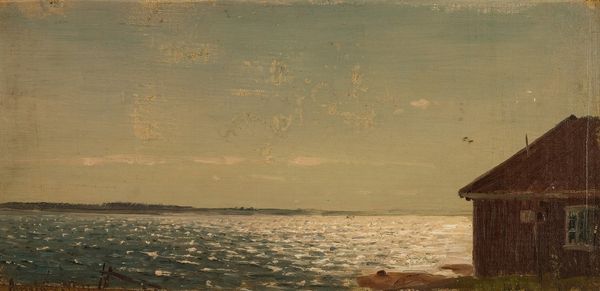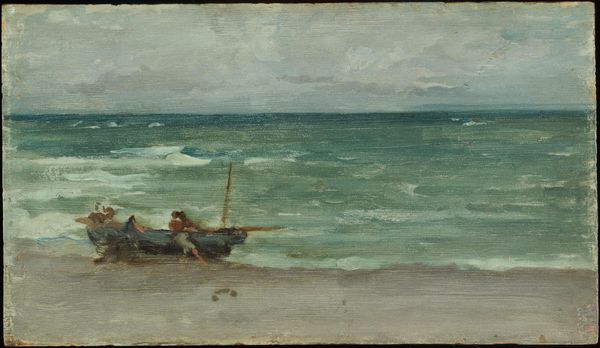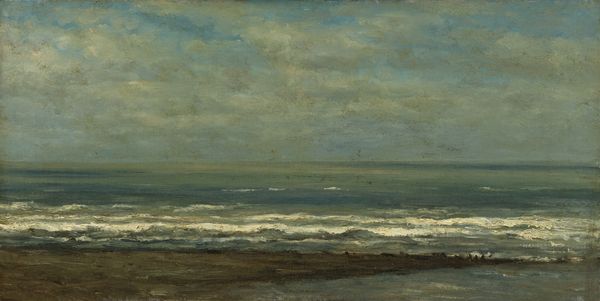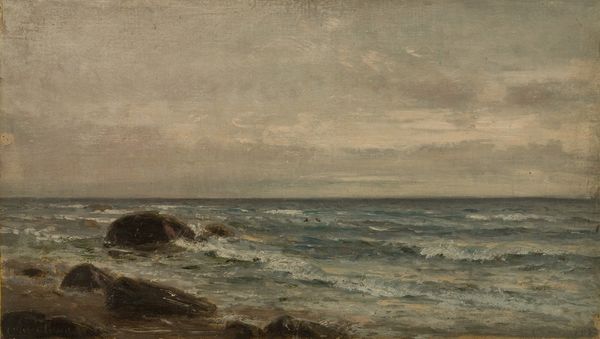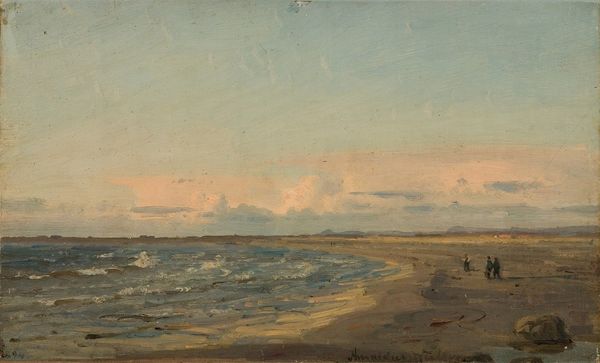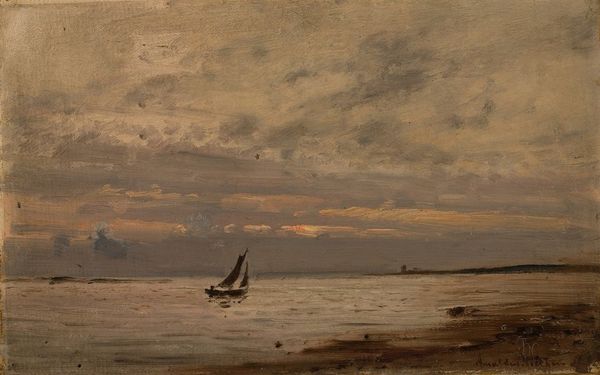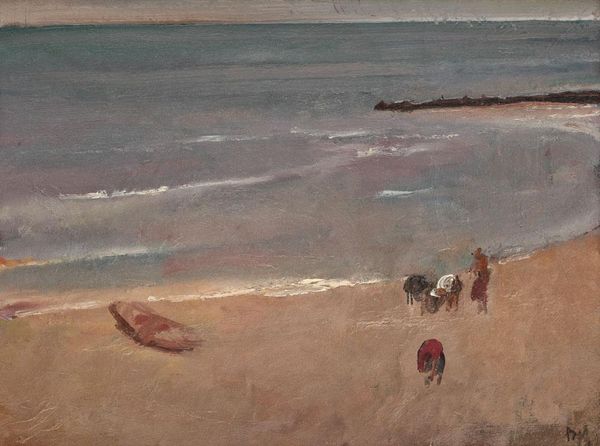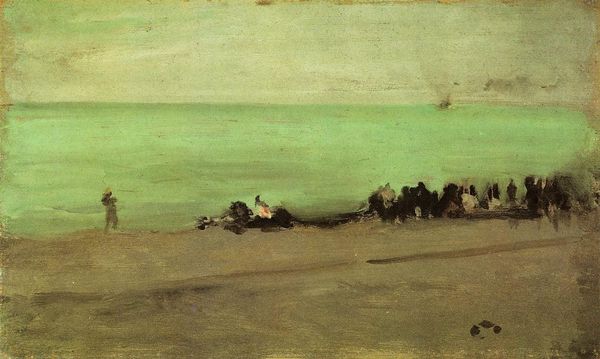
Copyright: Public Domain: Artvee
Editor: So here we have Corot's "Femme et Enfant au Bord de la Mer, Étretat," painted in 1865. It looks like an oil painting, capturing a somewhat somber beach scene. The color palette feels restricted. What strikes you most about this work? Curator: Primarily, the stark contrast between the solidity of the land and the fluidity of the water demands attention. Note how the horizontal expanse of the sea is divided into bands of muted blues, establishing depth and perspective, a stage for the figures in the foreground. Editor: It feels very subdued. The composition, with the woman and child to one side, creates an asymmetry. Is that significant? Curator: Indeed. Observe how Corot employs the compositional strategy of asymmetry. The subtle placement of the figures creates a dynamic tension. Now, consider the artist's choice of rendering the human form. Is it incidental, or essential to the painting's design? Editor: The forms are loose, blended...almost like they're dissolving into the landscape. Perhaps that emphasizes a harmonious relationship between humanity and nature? Curator: Precisely. Also notice how the visible brushstrokes animate the canvas, suggesting the ephemerality of the moment captured. Editor: This was really insightful; I never thought about the asymmetry being deliberate and functional. Curator: And I hadn’t noticed the harmony of humanity and nature, it has also changed my understanding of the painting.
Comments
No comments
Be the first to comment and join the conversation on the ultimate creative platform.
